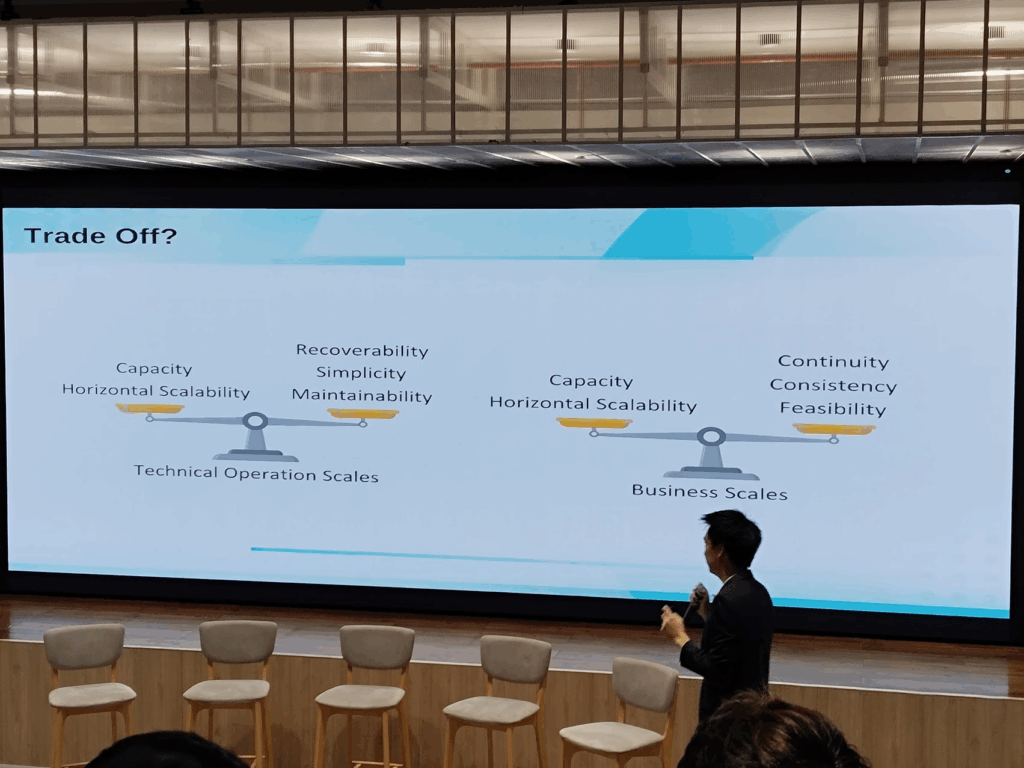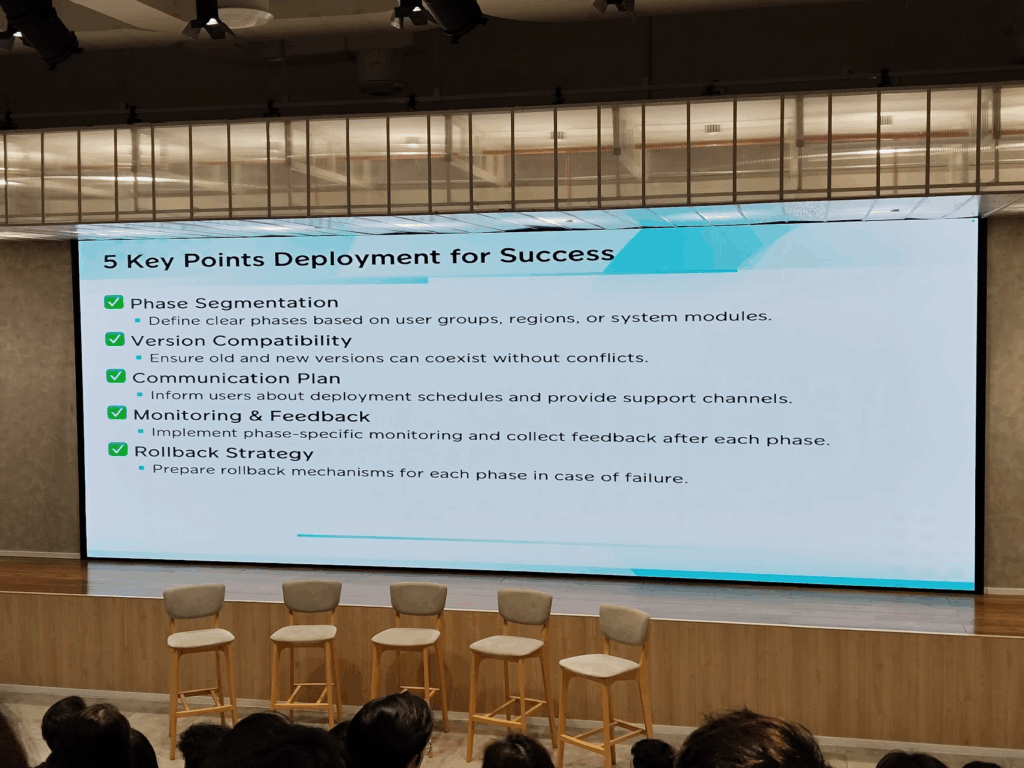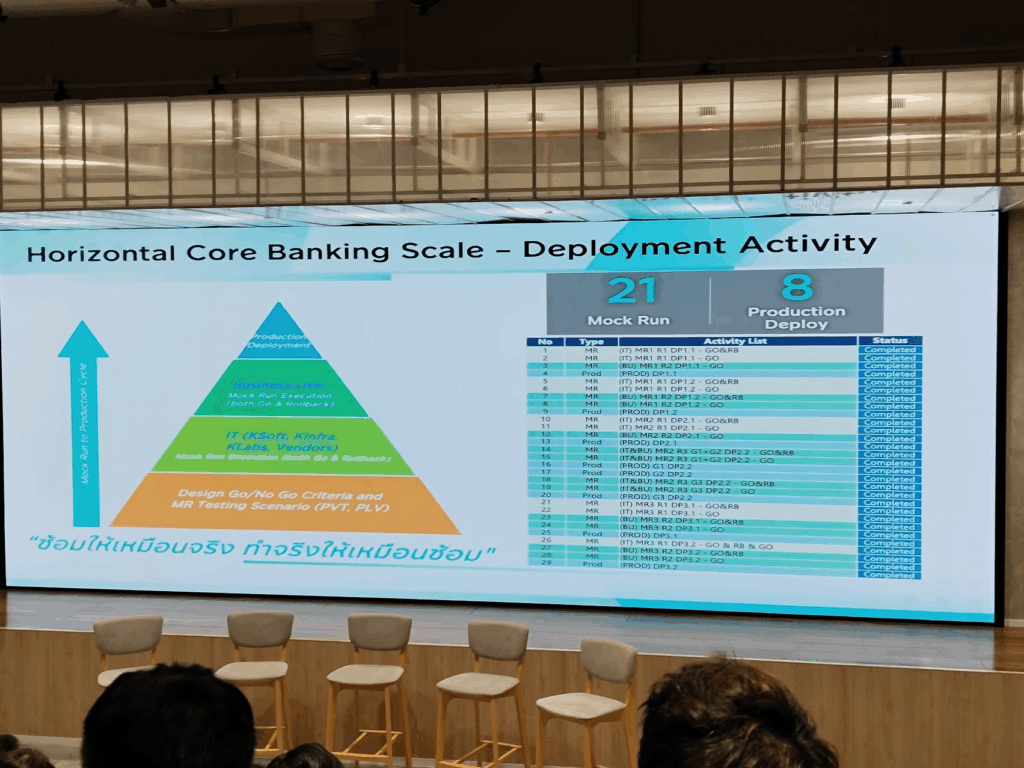
I attended the “KBTG Meet Up – Build for Scale: Lessons from Horizontal Core Banking & Enterprise Systems” on July 17, 2025. The meetup is about how KBTG migrated its core banking application, which has 173 connected interfaces, without any downtime. Here are the key takeaways that I got from the meetup.
- Designing
- Deployment Planning
- Deployment Simulation
- Management
Designing

- Good observability leads to a good design.
- There is a trade-off for each decision.
KBTG previously had a monolithic core banking application with no horizontal scalability. The application was capable of handling the traffic at that time, but the team predicted that it would be unable to handle the growth.
How do they know? KBTG has good observability, which provides them with a good sense of their current capacity and how big they want to scale in the future.
For each decision, there is a trade-off for both technical and business aspects. With the data they have, they decided that they want horizontal scalability. This will provide them with improved availability, performance, fault tolerance, and more. However, it’ll also make the application more complex, harder to maintain, and more costly.
Deployment Planning

- Control the scope and reduce the risk with phase segmentation and version compatibility.
KBTG divided the migration into multiple phases (small incremental changes). Each phase has clear user groups, regions, or system modules that will be working on.
For each interface, they coordinate with the other teams and lock the version, so that they can test the migration with the correct version and ensure full compatibility.
Deployment Simulation

- Have detailed deployment steps.
- Prepare procedures when things go wrong.
- Practice both deployment and rolling back.
The migration process took 9 months with 21 mock runs and 8 production deployments.
The key to success here is that they have detailed deployment steps written down. This reduces human error, like forgetting to run some commands during the deployment. They also prepared procedures to follow when things go wrong on each deployment step.
For each deployment, they do at least 2 mock runs to validate the deployment steps and practice the deployment. They also practice rolling back the changes
Management
- It’s the management’s job to deal with all the risks from outside so that the technical team can focus on the migration.
Connecting with 173 interfaces, the core bank migration team has to coordinate with a lot of other teams. Migrating the app alone is very hard. It’s the management’s job to deal with all the risks from outside so that the technical team can focus on the migration. For example, negotiating enough priority to get the cooperation from the other teams, or coordinating the version freeze so that the team can migrate the application with a specific version, etc.
